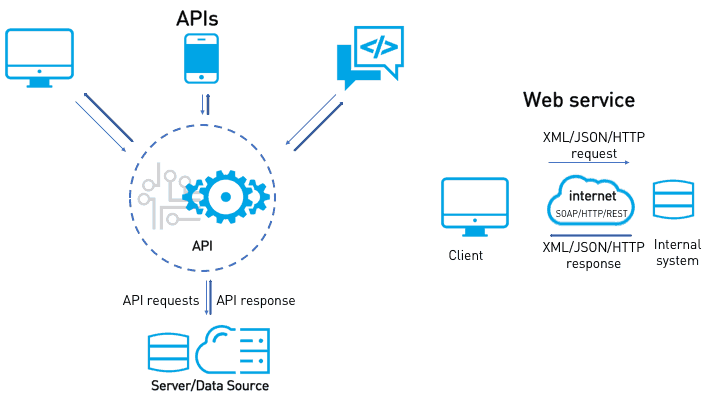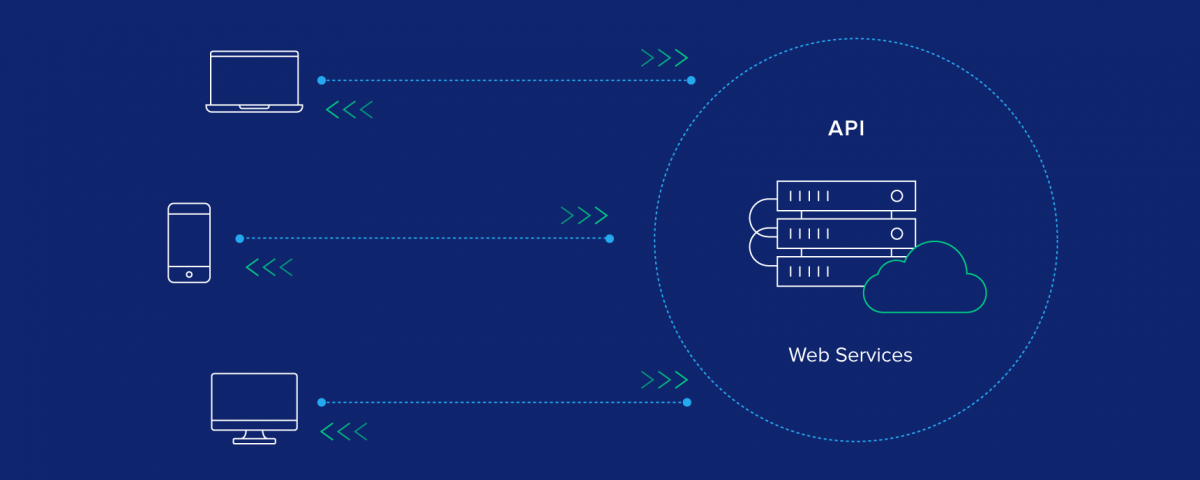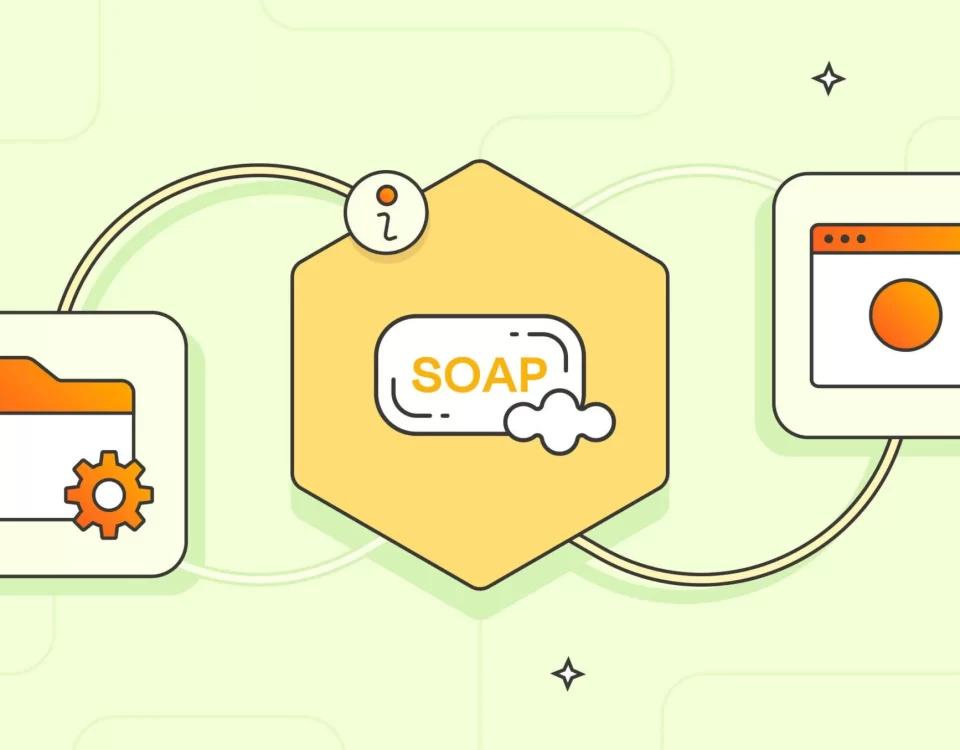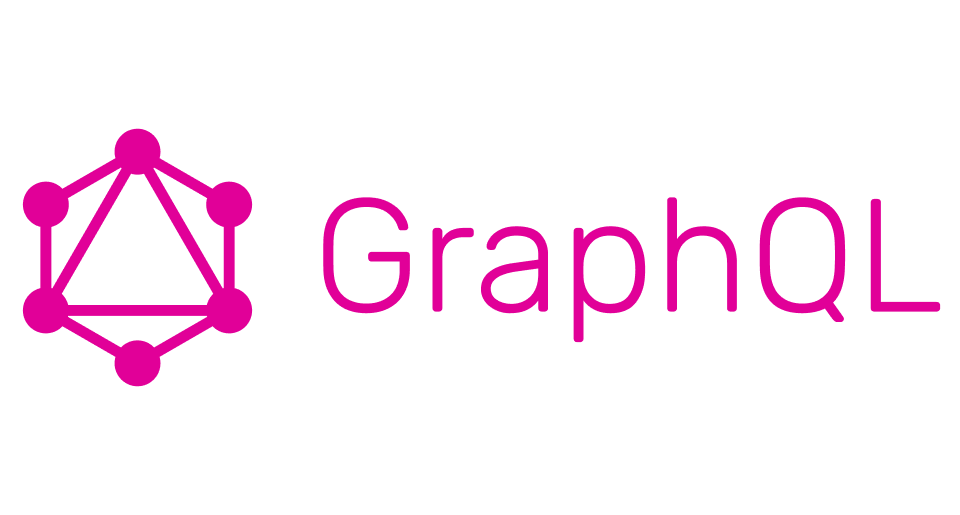
Complete-guide-to-API-development
27th March 2021
The History of iOS App Development
8th April 2021A web service and an API are two very similar concepts, so it can be difficult to understand the similarities and differences.
Terminology Definition
Before we get started further explaining web services and APIs, we first need to define a few other terms:
- XML [eXtensible Markup Language] is a standardized format for storing and sending data. Similar to HTML, XML stores data by wrapping it in descriptive tags.
- JSON [JavaScript Object Notation] is similar to XML in that it also stores and enables you to send data in a standardized format. JSON just uses a different, object-based, methodology for systematically storing data.
- HTTP [HyperText Transfer Protocol] is the foundation of transferring data and communications on the internet.
- SOAP [Simple Object Access Protocol] is a messaging protocol used for exchanging structured information[XML data] over a network.
- REST [REpresentational State Transfer] is a standardized architectural style that can be used when creating a web API.
- Web applications (Web app) are computer programs that are accessed over the internet through a computer’s web browser.
What is a Web Service?
A Web service is a way for two machines to communicate with each other over a network.
A web server running on a computer listens for requests from other computers. When a request from another computer is received, over a network, the Web service returns the requested resources. This resource could be JSON, XML, an HTML file, Images, Audio Files, etc.
What is an API?
An API or Application Programming Interface, is a set of definitions and protocols that allow one application to communicate with another application.
So What’s the Difference?
You might be wondering to yourself, APIs and Web services sound like the same thing. It’s a way for two computers to communicate with each other over the internet, right? Well, not quite.
As we mentioned in the section about “What is an API?,” not all APIs are accessible over the internet(a network), while Web Services must always be accessed through a network. That’s the difference right there.
All Web Services are APIs, but not all APIs are Web services.
Is a REST API a Web Service?
The short answer? Yes, REST APIs are a type of Web Service APIs.
A REST API is a standardized architecture style for creating a Web Service API. One of the requirements to be a REST API is the utilization of HTTP methods to make a request over a network.
REST was officially defined by computer scientist Roy Fielding in 2000 during his Ph.D. dissertation. It essentially changed the way applications are built. The implementation of the frontend “client” can be built completely independently from the backend “server.”
A REST request from the client to the server usually consists of the following components:
- URL Path [https://api.example.com/user]
- HTTP Method [GET, PUT, POST, PATCH, DELETE]
- Header – (optional) additional information that the client needs to pass along in the request such as Authorization credentials, Content-Type of the body, User-Agent to define what type of application is making the request, and more]
- Parameters – (optional) variable fields that alter how the resource will be returned.
- Body – (optional) contains data that needs to be sent to the server.
Here’s How the REST API Works:
Let’s say that you want to see what your best friend posted on Instagram. To do this, you need to go on the app and open up your friends Instagram page.
In this example, your Instagram app [the client], would make a request to Instagram’s server [the server] to request your friend’s Instagram profile. This request would be a GET request to the /users endpoint and in the parameters of the request your friend’s account ID would be included.
- HTTP Method: GET
- URL: https://api.instagram.com/v1/users/
- Parameters: user={best_friends_user_id}
In the same way that you use a GET request to retrieve data, a POST request would be used to create data on a platform. So let’s use the example of posting an image to Instagram. This request would be a POST request to the /media endpoint with a body of the image and parameters with your caption.
- HTTP Method: POST
- URL: https://api.instagram.com/v1/media/
- Parameters: caption={my_great_caption}&user={my_user_id}
- Body: Image to upload
Benefits of REST APIs
The reason REST is so great is that it offers a standardized methodology for making requests to an API. Once you learn one REST API, other REST APIs are going to function in a similar way.
If an API is available over the internet, there is no need to install additional software within your application. You can access the data from any application that is connected to the same network as the API.
With separated development on the client and server, the client code can be updated without affecting the server, and the server code can be updated without affecting the server. This is assuming the changes are developed in a backward-compatible way.

The Core Differences
Here is a quick summary of what we covered above.
- APIs are application interfaces, meaning that one application is able to interact with another application in a standardized way.
- Web services are a type of API, which must be accessed through a network connection.
- REST APIs are a standardized architecture for building web APIs using HTTP methods.
This article has helped you sort through the differences, ins and outs, and general information you may need to know for an API and Web service.





